
The Cave Beneath the Sea
Laura Knight-Jadczyk
October 18, 2003: I was a little bit disturbed by the altar on the previous page - especially when we soon encountered a little poodle with exactly the same color fur at a cafe down in Cassis.
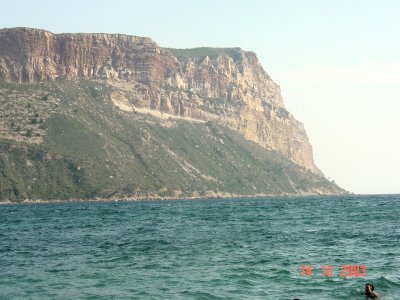 |
| Above we see Cap Canaille from the little beach in Cassis that I photographed from the top of the cliffs and noted on the previous page. |
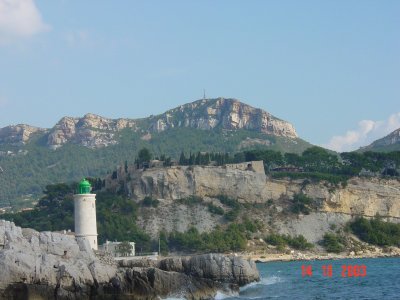 |
| The photo above is also from the beach in Cassis, a shot of the mountains just to the left of Cap Canaille. |
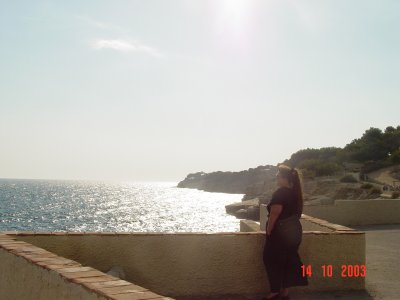 |
| Here, at a little cafe on the waterfront, yours truly (above) enjoyed some wonderful French wine and Ark enjoyed a good German Beer. The owner of the cafe had a little poodle that startled me with the likeness of its fur to the pitiful remains at the "altar" on the top of Cap Canaille. |
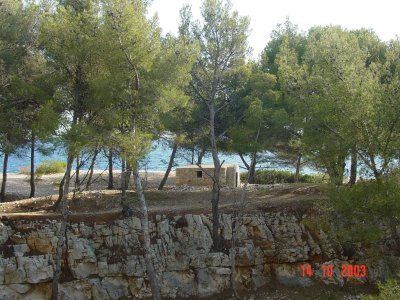 |
| A beautiful little camping park in Cassis was located along what are called Calanques. Situated on 12.5 miles of littoral between the Cap Croisette in Marseille and the Cap Canaille in Cassis, there are a number of impressive white limestone cliffs - profound faults called Calanques. They were formed more than 12,000 years ago when - theoretically - a slow reheating at the end of the last ice age melted the glaciers and raised the sea-level. This is the explanation for the existence of the Cosquer Cave being so far below sea level. The Calanques are very close to Marseille, and are very carefully preserved in their natural state. The calanques are arid and difficult of access. They are favorites of hikers, rock climbers and sailors. When you are in the Calanques, you are protected from the wind, and that is why they are also favored by bathers and divers. |
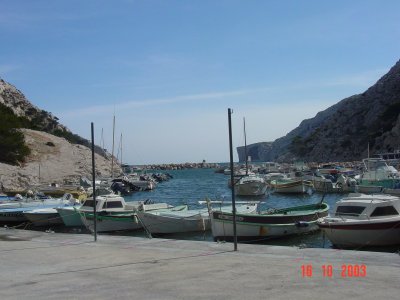 |
| Two days later we visited the famous calanque of Cap Morgiou. There is a little village there at the apex of the inlet though the calanques are now protected and it is forbidden to build anything new there. |
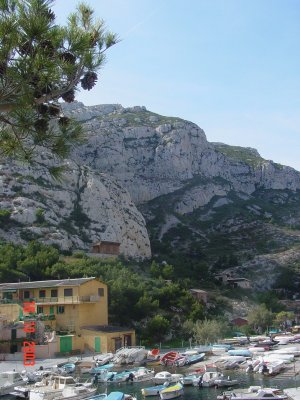 |
| The village at Cap Morgiou is literally buried in what amounts to a deep fault in the earth's crust. The road is so steep and narrow that it is almost heart-stopping to drive over the steep cliffs, between sheer rock faces that only admit a single, small, car. As you can see, there is a little hotel and a lot of boats are moored there. Most visitors are hikers, climbers or divers. |
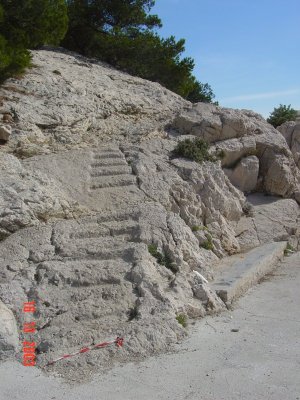 |
| Thankfully, there is a sort of "beginner's path" for the rock-climbing challenged people such as your's truly. They even carved some steps into the solid rock! |
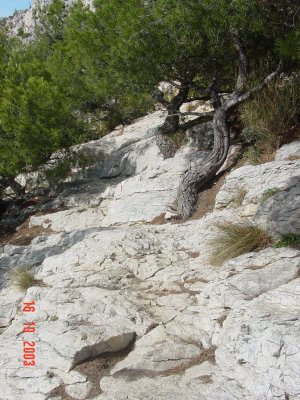 |
| But even the easy path is pretty tough, as you can see above. |
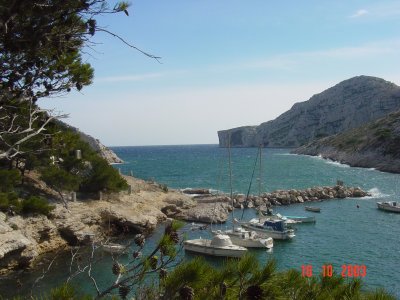 |
| The view from the top of the easy climb was worth it, though. Far out to the right, you see Cap Morgiou where the Cosquer cave is located 120 feet beneath the water level... |
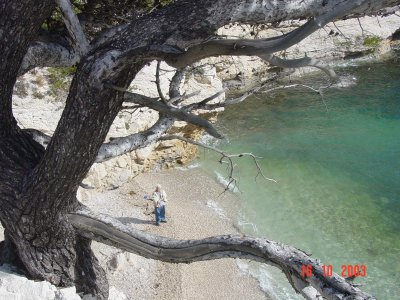 |
| Looking straight down from my secure perch, there is a marvelous little beach where Ark - being a more accomplished climber - managed to go to fetch me some rocks for my growing collection. |
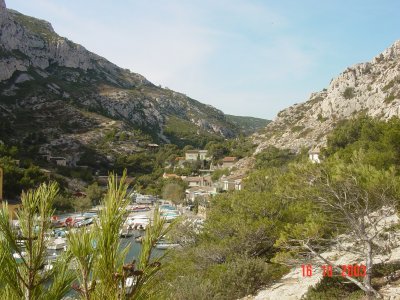 |
| Looking back from the higher elevation, you can see the configuration of the Calanques. |
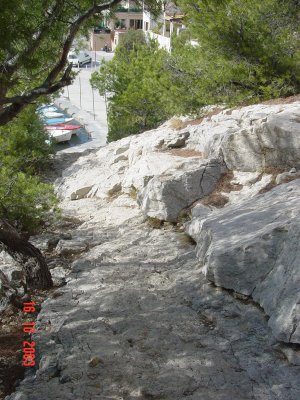 |
| Going down can be even more tricky than going up when the stone is polished by centuries of footsteps... |
Now, a bit about the Cosquer Cave. The peoples who left the marvelous art in this cave, according to the experts who have studied the matter, did not live in the caves. It is thought that they only went there to create art and perhaps conduct some sort of initiatory rites. Analyses have established what kind of wood they used for their torches and precise dates were obtained for pieces of charcoal lying on the cave floor as well as the charcoal lifted from some of the art. There are two series of date ranges: one about 27,000 years ago and the other at about 18,500 years ago. What this means is that the Cosquer Cave was visited during two periods only, with that odd interval of 8,500 years in between.
The rock art from the older period consists of stencils of hands - with incomplete fingers - made by placing the hand against the wall, curving selected fingers, and then blowing pain around the hand to outline it in red or black. Also in that period, someone covered the walls and ceilings with grooves made in soft surfaces - presumably "finger tracings."
It was only in the second period of use that animals were painted and engraved. There are about a hundred pictures of animals recorded in the Cosquer Cave and most of them are horses, ibex, chamois, bovids and cervids. There is also a feline head and several animals that no one knows exactly what they represent.
One of the unusual features of the Cosquer Cave is that sea animals are also depicted including eight seals, three great auks, a fish and jellyfish and even penguins. There are also geometric signs - rectangles, zigzags, and spear signs on some of the animal bodies.
The art of the Cosquer Cave is parallel to the prehistoric art of Ebbou in the Ardeche region of France and with Parpallo in the area of Valencia, Spain. This suggests that the individuals responsible for this art traveled quite a bit and had extensive contacts.
Many people have wondered what the people who created the great Cave Art of Europe looked like since they weren't very interested in leaving portraits of themselves. A bit further to the East, along the Italian-French border, other caves contained a group of a dozen skeletons, nine of which were well-preserved. These individuals belonged to the classic Cro-Magnon type and are generally placed contemporary to the earlier works (phase one) in the Cosquer Cave. The only representatives of the Cosquer phase two period are some badly preserved skeletons from the Ardeche and Dordogne regions of France. These were also modern humans of the Cro-Magnon type which means that they were like us, only better.
The reader may like to take a virtual tour of the Cosquer Cave.
You are visitor number .